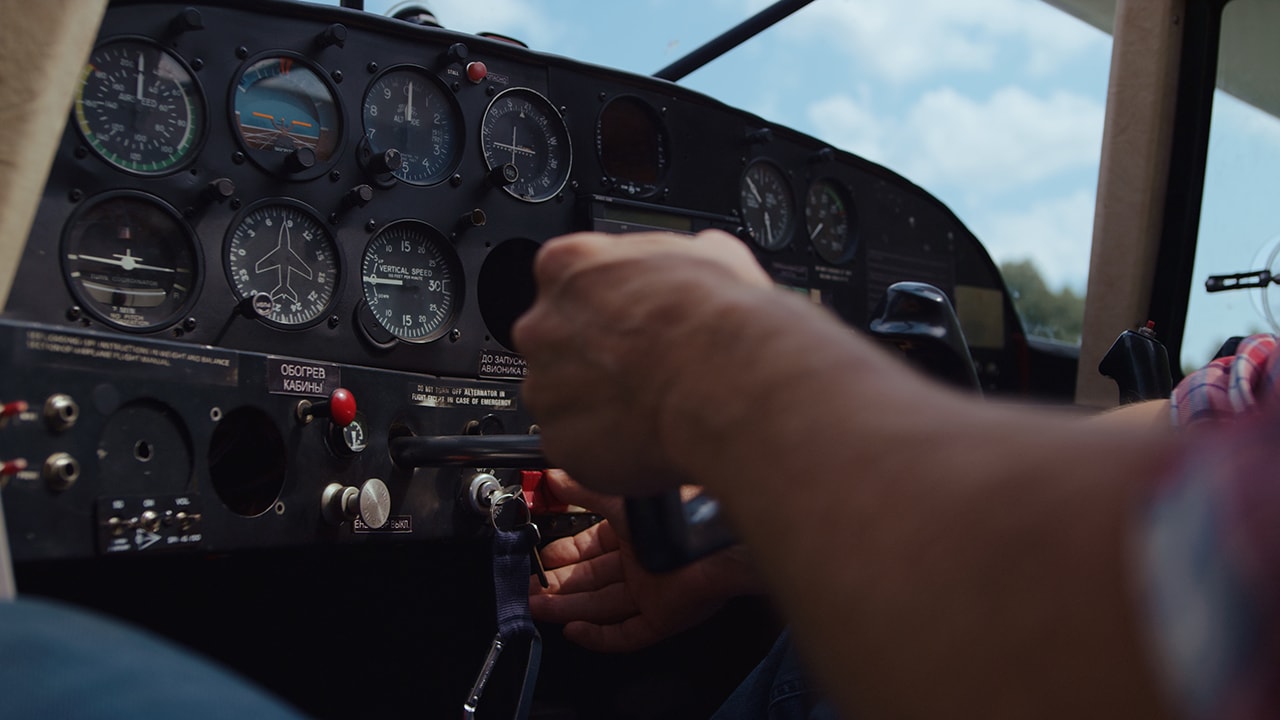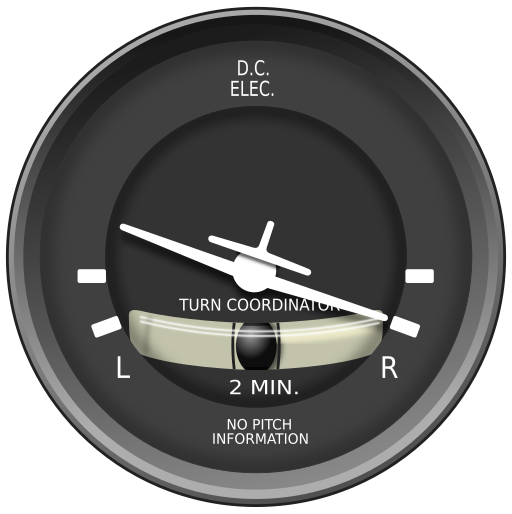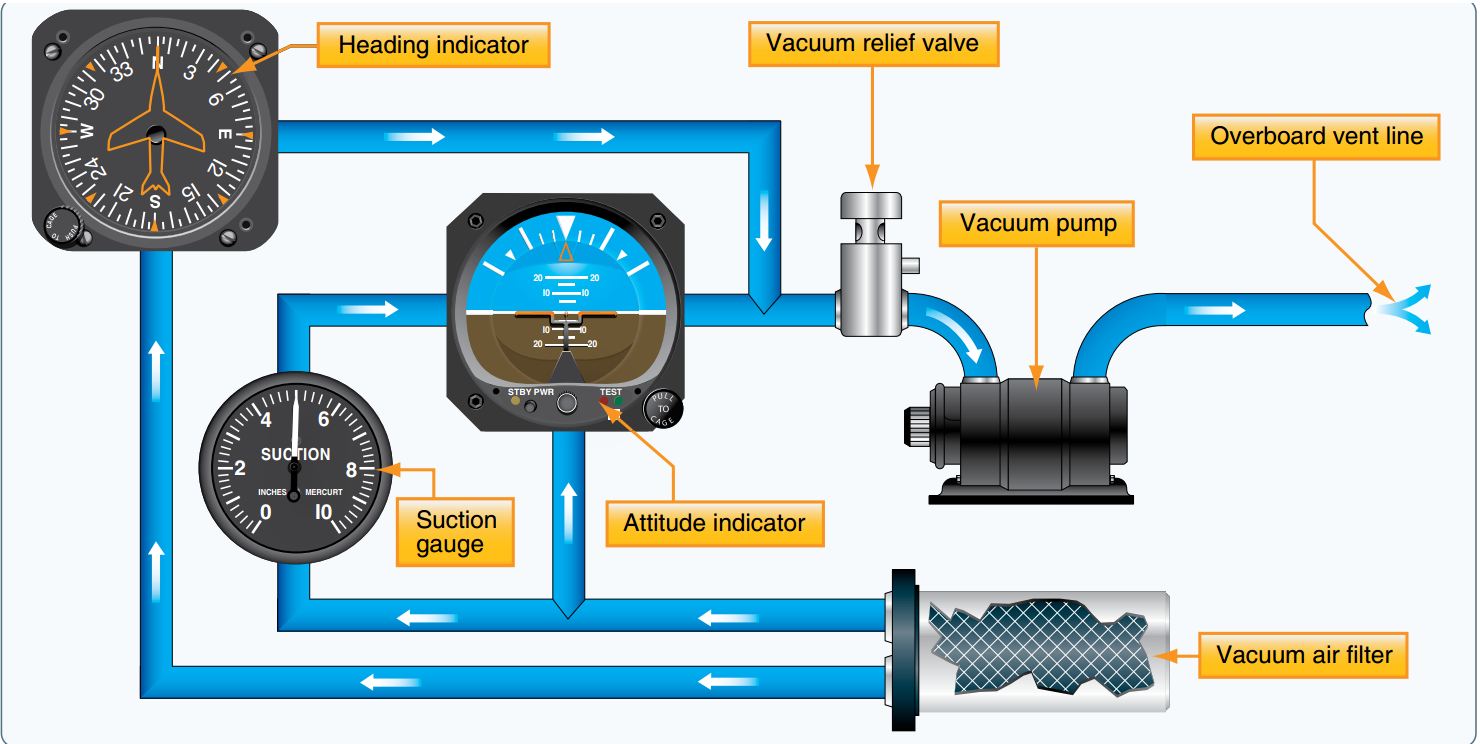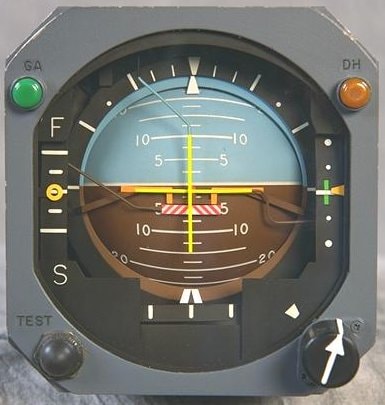How to Read Attitude Indicator: A Simple Step-by-Step Guide
Sep 27, 2024
Ever wondered what keeps pilots oriented amidst clouds or night skies? The attitude indicator is a crucial instrument, ensuring flight safety and boosting pilot confidence by providing clear, reliable guidance on an aircraft's orientation. Dive into our comprehensive guide to grasp the importance of mastering this essential tool for every aviator.
Reading and Interpreting the Attitude Indicator
The attitude indicator (AI) gives you a quick and all up view of pitch and bank attitude of the aircraft so you can see where you are in an instant.
On the gauge you will see an aircraft, the sky and the ground, separated by an artificial horizon line.
This is the artificial horizon display. It makes it easier to see where the aircraft is in relation to the horizon.
There are markers on the gauge face such as hash marks, pointers, arrows and lines. These helps quantify the pitch and bank changes so you can see at a glance.
Hash marks around the upper edge of the instrument indicate the number of degrees of bank angle. The more the aircraft rotates around its longitudinal axis, to the right or the left, the higher the bank angle.
There are also a series of horizontal pitch angle lines above and below the artificial horizon. When the artificial airplane lines up with the 10-degree line in the blue area above the horizon, the aircraft has a 10-degree nose-up attitude. If it lines up with the 20-degree line below the artificial horizon, the aircraft has a 20-degree nose down pitch angle.
The little aircraft on the gauge is key. It rolls left or right to show the bank and moves up or down relative to the artificial horizon to show pitch changes.
And look at the little dot between the wings of the little aircraft. That’s the current pitch angle. So, you can make accurate and instant decisions during flight.
Understanding the Attitude Indicator
The attitude indicator is a cornerstone of an aircraft’s instrument panel, offering pilots indispensable information about the aircraft's orientation relative to the Earth’s horizon.
Often referred to as the artificial horizon or gyro horizon, this instrument is pivotal for maintaining situational awareness, especially in challenging conditions.
In essence, the attitude indicator provides a visual representation of the airplane’s pitch (nose up or down) and roll (wing up or down) relative to the Earth's horizon. How does an Attitude Indicator Work? It helps pilots understand these orientations in real-time.
This makes it an essential tool for maintaining straight and level flight, executing coordinated turns, and navigating through various weather conditions.
For pilots flying in instrument meteorological conditions (IMC), where outside visual references are limited or nonexistent, the attitude indicator becomes even more critical.
It allows them to maintain control and ensure the aircraft’s orientation remains correct, thereby enhancing flight safety.
By consistently referencing the attitude indicator, pilots can make informed decisions and adjustments, ensuring a smooth and controlled flight experience.
Whether you’re a seasoned aviator or a student pilot, mastering how to read attitude indicator is fundamental to your success and safety in the skies.

Why the Attitude Indicator Matters for All Pilots
First and foremost, for IFR pilots, the attitude indicator is key. It shows the airplane's position relative to the Earth's horizon, displaying pitch and bank against an artificial horizon.
This is essential when visibility is poor so you can fly safely and steadily. Understanding how to read the attitude indicator is crucial in these situations.
But VFR pilots shouldn’t forget the attitude indicator. Understanding this instrument will help you control the aircraft attitude in all conditions and have a reference for straight and level flight.
In rapidly changing weather, VFR pilots will find knowing the attitude indicator a lifesaver. It will help you navigate through unexpected IMC where visibility is zero and you need to stay on course.
Night flying has its own challenges, including illusions that can disorient you. Instrument flying experience, especially with the attitude indicator, is invaluable during night flying to keep you spatially aware and in control of the aircraft.
Lastly, the attitude indicator, being a direct indicator gyroscopic flight instruments, is mounted in the cockpit for easy reference.
Its accessibility and functionality make it a must-have for all pilots to increase safety and confidence in normal and abnormal flight.

What an Artificial Horizon Works
Attitude indicators use a built-in gyroscope to give you accurate readings for flight. The gyroscope is the heart of the device to keep you safe and confident.
The gyroscope in attitude indicators is powered by the aircraft’s vacuum system which sucks air from an onboard vacuum pump. This setup is smooth and reliable.
A key feature of attitude indicators is they show bank and pitch attitude instantly without any lag. This real time feedback is crucial to make quick decisions.
As the airplane flies the gyroscope spins, and the attitude indicator shows the angular difference between the airplane’s axis and the Earth's horizon. This helps you stay oriented.
The indicator shows attitude in degrees and has reference lines to help you determine the airplane’s attitude. These lines are critical for safer and more controlled flight especially in tough conditions.

Common Challenges and Errors
Attitude indicators (AIs) generally experience limited errors, most of which can be easily remedied. It's important to understand these errors to maintain accurate readings during flight.
Some AIs come equipped with an adjustment knob. This handy feature allows pilots to move the miniature aircraft representation based on their point of view, ensuring the display remains accurate and user-friendly.
Older attitude indicators had specific limitations, with pitch limits of 60-degrees and bank limits of 100-degrees.
However, advancements mean that newer models now have pitch limits of at least 85-degrees and no set bank limits, offering greater reliability and functionality.
One common issue arises from the vacuum pump systems. If the instrument's container box fails or if there are air leaks, the AI readings can become inaccurate. Regular maintenance checks are crucial to avoid this problem.
Finally, precession can cause slight errors over time. To counteract this, the attitude indicator should periodically re-align with the horizon.
This re-alignment ensures that the AI continues to provide precise information for safe flying.

Advanced Digital Attitude Indicator Systems
Flight Director Attitude Indicators (FDAI) are critical for crewed spacecraft. They allow astronauts to monitor the spacecraft’s yaw, pitch, roll and orbit by providing data relative to a fixed-space inertial reference frame.
This is key to keeping the correct orientation and trajectory during space missions.
Attitude Heading Reference System (AHRS) gives you three axis information which is essential for aircraft stability and navigation.
These use ring laser gyroscopes or more affordable inertial sensors and magnetometers to determine the aircraft’s attitude.
Modern AHRS have come a long way and are now solid state. This means they are more reliable and can talk to many devices on the aircraft such as primary flight displays (PFDs).
This gives pilots all the data they need. The Attitude Direction Indicator (ADI) is another key part of advanced avionics. It integrates with a Flight Director System (FDS) to give a 3-D flight path cue.
This cue helps pilots stay on the desired flight path, safer and more efficient.
In short, these attitude indicators have the technology and the practicality to support pilots and astronauts. They give you the data and integration to get you there.
Attitude Indicators Maintenance and Selection
Choosing the right attitude indicator is key to your aircraft’s performance and your flying experience. Consider the type of aircraft you fly, your budget and your personal preferences.
Traditional attitude indicator uses a vacuum driven gyroscope. They have been around for years because they are reliable and simple.
Digital attitude indicators use electrically driven gyroscopes. These modern instruments can be part of a glass cockpit and change how you interact with and scan your instrument panel.
All in one primary flight displays take it to the next level and add in heading, altitude, airspeed and vertical speed indicator to the attitude indicator. This combines all the information you need for safer and better flying.

Mastering Attitude Indicators in Flight
Attitude is key to flying safely and confidently. Attitude is the angle between the airplane’s axis (pitch and roll) and the horizon. These horizontal and vertical references are the foundation of aircraft control.
The word “attitude” means how the nose and wings are pointing relative to the horizon. Pilots use this to fly level or climb and descend correctly. It’s the basis of visual and instrument flying.
It’s not just about reading the attitude indicator; it’s about practice and experience in flight. Pilots need to develop a feel for how attitude affects the airplane.
And understanding how the attitude indicator works, and its limitations is important. While these instruments are supposed to make us safer and more precise, knowing their failures or discrepancies is part of being a pilot.
Mastering Attitude Indicators: Essential for Private Pilot Training Success
Not mastering attitude indicators will make private pilot training much harder.
Without a solid understanding of how to read and use these instruments you’ll struggle to control the aircraft, especially during instrument flying where visual references are limited.
This gap in knowledge will mean more hours, more intense practice, a steeper learning curve, and more money lost in training.
But overcoming these challenges will build resilience and sharpen your skills so when you do master attitude indicators, you’ll have a level of expertise and confidence that sets you apart.
And it also creates a culture of continuous improvement and commitment. It makes flight safer and makes every pilot feel awesome.

Key Takeaway for Private Pilot Training
The attitude indicator is an essential skill for IFR and VFR pilots. It’s your best friend in controlling the aircraft in poor visibility or low ceilings.
By understanding attitude and how to use the attitude indicator you can fly competently and safely. And by practicing with it regularly and getting to know its limitations you can control the aircraft at all times.
Add this to your private pilot training and you’ll be a better pilot and more confident as you fly. Don’t underestimate the attitude indicator – it could save your life when you need it most. Keep practicing, keep learning and remember safe flying is all about attitude!
